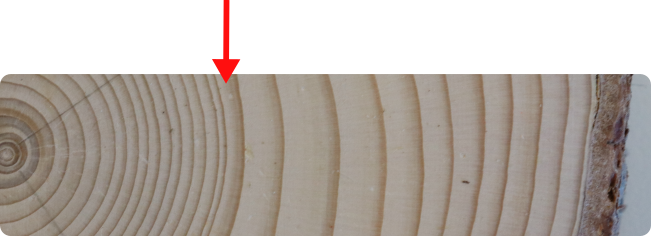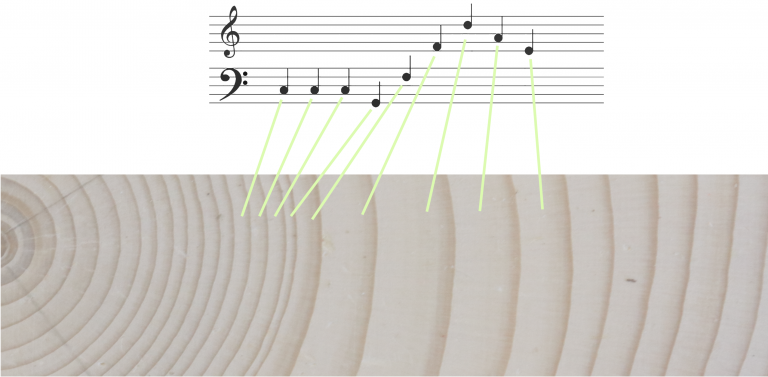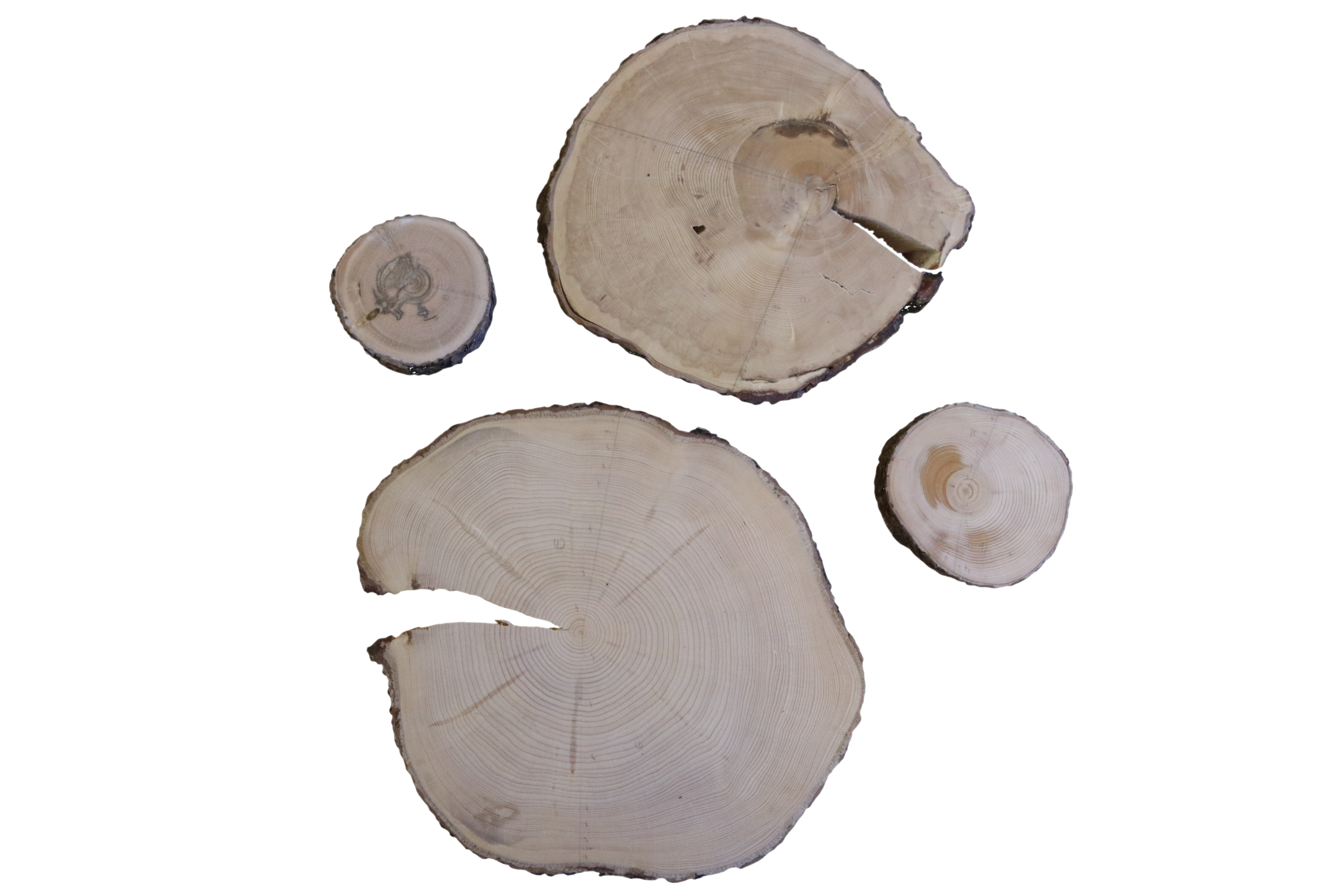Tree growth
Every year, the trees increase in circumference by producing wood. However, this process is not continuous due to the seasonal cycle in temperate and boreal forests. Trees are thus dormant during the winter, creating a discontinuity in wood formation, visible as tree-rings.

Growth rings of a balsam fir.
Each year, trees gain in size by producing wood. However, due to the cycle of seasons in the temperate and boreal forests, this growth is not continuous. During winter, trees are dormant, causing a discontinuity in the formation of wood, visible as growth rings.
The quantity of wood produced by a tree annually, or the width of the growth ring, is determined by a multitude of factors. Many of which can have a negative impact on a tree’s growth. Growth will be lower if:
- The tree is getting too old.
- The weather conditions during the year are adverse.
- The tree is attacked by an insect (for instance the eastern spruce budworm) or a mushroom.
- The tree is growing in an unsuitable environment.
- Sunlight is blocked by taller trees (reduced photosynthesis).
By analyzing the size of a tree’s growth rings, it is possible to reconstruct its history and compare it with that of other trees. This technique is called dendrochronology. By extension, we can also compare the history of several forests based on this information

When this fir was 20 years old (green arrow), mature trees above it died, allowing the fir to have better access to sunlight and stronger growth.
From growth to music

Illustration of the relationship between the growth ring’s width and the notes played on a part of the cross-section. The higher the notes are on the sheet music, the higher the sound.Each note played thus corresponds to a year of growth. This means the longer the symphony is, the older the trees that compose it
In order to create the symphonies, we assigned a music note to each growth ring relative to its width. The thinner the ring, the lower the note. On the opposite side, the larger the ring, the higher the note. By measuring the width of all the growth rings in a tree, it is then possible to assign a note to each ring, therefore obtaining a melody specific to that tree.
The forests behind the sites
The trees that were used to create the symphonies come from 21 old-growth forests, sampled in a 2200km2 territory southwest of Mistassini lake. Between 18 and 53 wood discs were sampled from these stands, totaling 756 discs. These discs come, for the most part, from black spruces, and in a smaller part, from balsam fir.
By measuring the width of the growth rings of each of these discs, we were able to create a melody for all the sampled trees. These 756 melodies were then gathered by stand and were synchronized. From this process, we produced 21 ‘’Symphonies’’, each depicting the annual growth from the trees composing it.

Discs of black spruces harvested in old-growth forests that were used to create the symphonies. On the top left corner: a 272 years old spruce. On the top right: 258 years old spruce. On the bottom left: 86 years old spruce. On the bottom right: 131 years old spruce.
